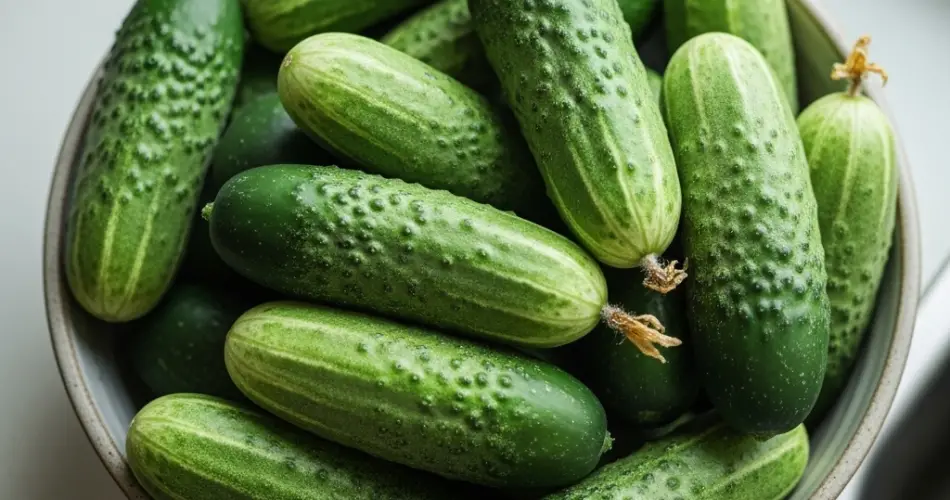If you’ve never grown a plant in your life but love the idea of fresh, homegrown vegetables, cucumbers are one of the easiest and most satisfying crops to start with. Whether you have a backyard, a balcony, or just a few containers, cucumbers can be grown with minimal effort and no prior gardening knowledge.
This beginner-friendly guide will show you how to grow cucumbers from scratch—even if you’ve never picked up a gardening tool before.
Why Cucumbers Are Great for Beginners
Cucumbers are fast-growing, productive, and fairly forgiving. With basic care, a single plant can yield many crisp, refreshing cucumbers in a season. They’re also versatile in the kitchen—perfect for salads, pickling, sandwiches, or infused water.
Even more encouraging, cucumbers adapt well to different growing environments. You can plant them in a garden bed, raised box, large container, or even a grow bag.
Step 1: Choose the Right Type of Cucumber
Cucumbers come in two main types: slicing cucumbers (for fresh eating) and pickling cucumbers (smaller and ideal for pickles). For container or small-space gardening, look for compact or bush varieties like:
-
‘Bush Champion’
-
‘Spacemaster’
-
‘Patio Snacker’
If you have vertical space (like a trellis or fence), vining varieties are also great and tend to produce more fruit.
Step 2: Gather the Essentials
Here’s what you need to start:
-
Cucumber seeds or seedlings
-
A large container (minimum 12 inches deep) or garden bed
-
Quality potting mix or loose, fertile soil
-
Trellis or vertical support (optional but useful for vining types)
-
A sunny location (at least 6–8 hours of sunlight per day)
-
Watering can or hose
No fancy equipment needed—just good light, water, and basic soil.
Step 3: Planting Your Cucumbers
Timing: Cucumbers are warm-weather plants. Wait until after the last frost and when nighttime temperatures consistently stay above 15°C (59°F).
Sowing Seeds:
Plant seeds about 1–2 cm deep (about half an inch). If planting in containers, sow 2–3 seeds in the center and thin to the strongest one once sprouted. In garden beds, space seeds or seedlings about 30–60 cm apart, depending on variety.
Transplanting Seedlings:
If you’re using starter plants, gently remove them from their container and place them into prepared soil or pots. Press the soil around the base and water well.
Step 4: Watering and Sunlight
Cucumbers are thirsty plants, especially once they start producing fruit.
-
Water deeply 2–3 times per week, more often during very hot or dry weather.
-
Water the soil, not the leaves, to avoid disease.
-
Keep soil consistently moist but not soggy.
Ensure the plants receive at least 6–8 hours of direct sunlight each day for best results.
Step 5: Support and Space Management
If you’re growing a vining variety, using a trellis or stake is a smart way to save space and promote air circulation. It also keeps fruit cleaner and easier to harvest.
Bush varieties don’t require support but may still benefit from a bit of structure to keep the vines from sprawling too much.
Step 6: Feeding Your Plants
Cucumbers are heavy feeders. Once the plant has several leaves, begin feeding every 2–3 weeks with a balanced, all-purpose liquid fertilizer or compost tea.
You can also improve soil health by mixing in compost or organic matter before planting.
Step 7: Watching for Problems
Cucumbers are generally easygoing, but here are a few things to look out for:
-
Yellowing leaves – often due to overwatering or nutrient deficiencies.
-
Powdery mildew – a white, dusty coating on leaves. Improve air circulation and avoid watering leaves.
-
Pests – watch for aphids or cucumber beetles. Spray with water or use a mild soapy solution if needed.
Check plants regularly, and take action early if you notice issues.
Step 8: Harvesting Cucumbers
Cucumbers grow quickly and can be harvested in as little as 50–70 days from planting, depending on the variety.
-
Pick when they’re firm, green, and about 15–20 cm long (or smaller for pickling types).
-
Harvest regularly to encourage more fruit production.
-
Don’t let cucumbers over-mature on the vine—they become bitter and slow down further growth.
Use clean scissors or garden shears to cut them from the vine, leaving a short stem attached.
Final Thoughts
Even with zero gardening experience, cucumbers are an excellent crop to begin your journey into growing your own food. They’re fast, productive, and satisfying to grow—and the taste of freshly picked cucumbers from your own container or garden bed is unbeatable.
With a sunny spot, regular watering, and a little care, you can enjoy a harvest of fresh cucumbers all summer long. No green thumb required!



